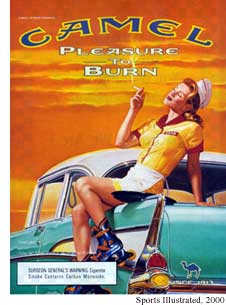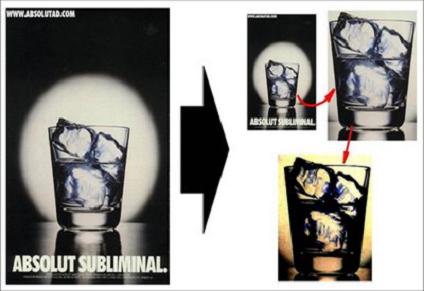Working with Team 3 (Air Canada) was a really good experience, I learned a lot of eachteam member and about team work. Working in this video was something different to the things I usually do, but it was a very good experience. I really enjoyed analysing and learning about this company, even though I´m not focusing in marketing because I´m an industrial engineer back in Mexico, I learned too much things in this course that will be helpful for me in the near future.
Marketing and Consumerism – Special Issues for Tweens and Teens
Tobacco and alcohol companies have long targeted young people, hoping to develop brand loyalties that will last a lifetime.
With smoking killing over 45,000 Canadians each year, and thousands of others quitting, it’s crucial for the tobacco industry to continually cultivate new and younger smokers.
In Canada, government attempts to restrict tobacco advertising culminated in a 2007 decision by the Supreme Court of Canada that upheld federal legislation restricting tobacco advertising, banning tobacco sponsorships and requiring larger warnings on cigarette packages. [5] This is significant when it comes to youth because studies have clearly found that nonsmoking adolescents who were more aware of or receptive to tobacco advertising were more likely to become smokers later. [6] Girls are a particular target of the tobacco industry, with brands in the U.S. like Superslims Lights and Camel No. 9 designed specifically to appeal to females.

Like the tobacco industry, the alcohol industry spends billions of dollars annually trying to grab the eyeballs of consumers of all ages – and for good reason. When it comes to youth, research shows that alcohol advertising normalizes drinking, changes young people’s attitudes about alcohol and is linked to early initiation to drinking and risky behaviour.
Compared to tobacco, legislation relating to alcohol advertising is less restrictive, which provides more opportunities to engage youth. The U.S.-based Center on Alcohol Marketing and Youth (CAMY) notes that studies have found that exposure to television beer advertisements on TV, alcohol ads in magazines, alcohol ads on billboards, in-store beer marketing displays, beer concessions at sporting events and alcohol use in movies, increased the likelihood of drinking among young people.

http://mediasmarts.ca/marketing-consumerism/marketing-and-consumerism-special-issues-tweens-and-teens
JC Penney Is Copying Target’s New Marketing Strategy
Back in August, after an awful first half of the year, J.C. Penney CEO Ron Johnson described to Wall Street analysts how he was going to turn the struggling discount store chain around. The centerpiece of his plan was to turn each JCP into a faux main street featuring differently branded shops, such as Levi’s, Izod and Liz Claiborne.

Target’s new ad campaign for the fall is titled, “Introducing The Shops at Target.” The commercial features shoppers strolling down an ersatz main street visiting differently branded shops, such as Kirna Zabete, Patch NYC, and Odin.
Looks to be the same strategy but, who was first?
https://www.youtube.com/watch?feature=player_embedded&v=4CxwY6blXuw
Renault: The first car carried by likes

Subliminal Marketing – Fact or Fake
Subliminal messages are very much prevalent in the world of advertising. These are messages which are presented below the threshold of human understanding. The chances of they being understood by humans is lesser than 25%. The technique is to give inputs below the threshold of conscious perception. To illustrate, consider a advertisement that flashes in front of you on TV or cinema, but is so short and fast that your conscious mind does not acknowledge it. It comes in every form of media from print to web, packaging, logos and magazines to movies. You could say that it’s graphic design at its best.
So, yes, subliminal messages are not a fiction, they are real and existent.
The question here is: How often do we encounter them?


http://www.wordofmouthexperiment.com/articles/subliminal-messages/subliminal-messages-marketing-fact-or-fake
Ethical Issues When Marketing To Children

Marketing ethics refers to the philosophical examination, from a moral standpoint, of particular marketing issues that are matters of moral judgement.
One of the biggest targets of marketers are children. Sometimes children can be an easy target when it comes to selling a product to them. But, there are several ethical issues when we talk about marketing to children.
For example, companies have become notorious for the use of psychologists in their advertising and marketing campaigns. What the companies do is that when trying to create marketing strategy, they will involve psychologist to tell them about tactics that they can use to influence children.
But, is this practice ethical?
http://www.articlesbase.com/advertising-articles/ethical-issues-when-marketing-to-children-1897536.html
Hello world!
Welcome to UBC Blogs. This is your first post. Edit or delete it, then start blogging!
